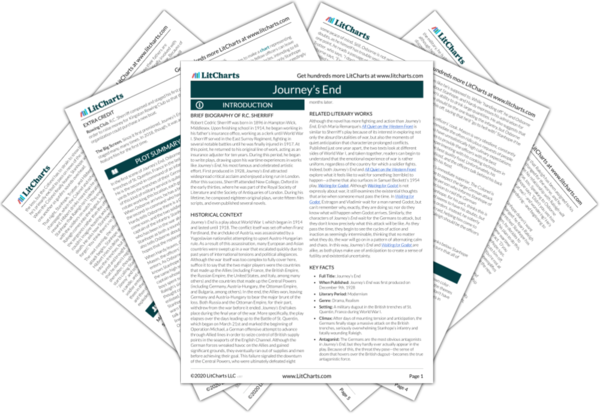When Osborne arrives in the trenches and talks to Hardy, both men notice an earwig running around a candle over and over again. “It’s been running round and round that candle since tea-time,” Hardy marvels. “Must have done a mile.” Given the cyclical nature of life in these trenches, this image of a bug sprinting circles in the dugout is quite resonant. Indeed, the soldiers in Journey’s End experience a repetitious pattern: they wait for something bad to happen, then something bad does happen, and then they go back to waiting for the next bad thing to happen. As a result, their efforts as soldiers in the trenches begin to take on a rather futile quality, as if no matter what happens, the war will continue. As such, an earwig running a mile while merely circling the same spot is rather representative of the soldiers’ collective existence, since it symbolizes a lack of true progress. What’s more, Hardy tells Osborne that if he wants to win an earwig race (a game the soldiers sometimes bet on), he should dip his insect in whiskey, which will make it go faster than its competitors. Yet again, then, the earwig represents a phenomenon in the soldiers’ lives, since Stanhope—the captain himself—openly admits that the only thing keeping him going is whiskey. In this way, Sherriff uses the earwig as a representation of the soldiers’ lives during wartime, allowing it to show the audience what it looks like to lead an almost intoxicatingly unproductive existence.








